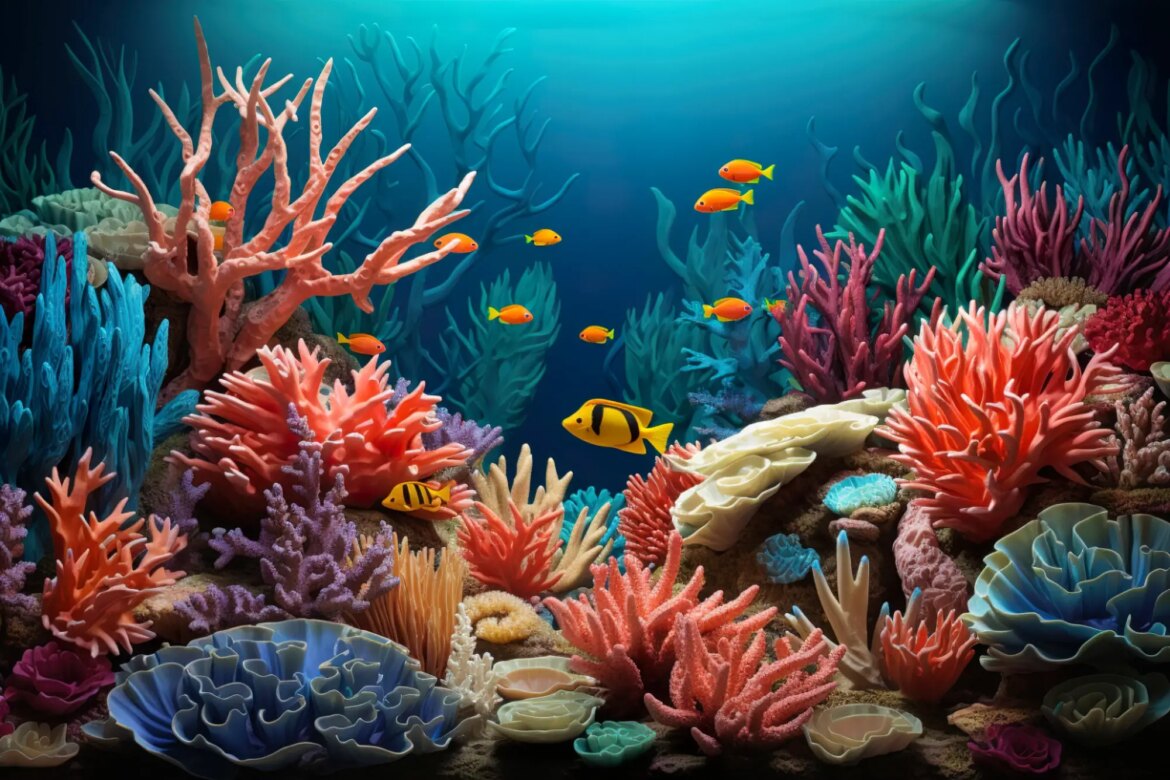Recently unveiled research indicates that seaweed, traditionally utilized to evaluate the health of coral reefs, might in fact be conveying deceptive signals. The study, analyzing data from over 1,200 marine locations, implies that variations in responses to pollution among macroalgae species could mask reef stress signals, thus misguiding conservation initiatives.
For decades, scientists have relied on seaweed as a barometer for the wellbeing of coral reefs.
But what if the seaweed was providing false readings?
Fresh research from the University of British Columbia uncovers that indeed it has been, necessitating novel methodologies to ascertain the extent of human-induced damage to specific reefs.
“Given the global threat posed to reefs by climate-driven stressors, this finding is particularly crucial today,” states Dr. Sara Cannon, a postdoctoral fellow at the UBC Institute for the Oceans and Fisheries and the main author of the study.
Macroalgae species exhibit differential behavior
Seaweed is part of a larger organism group known as macroalgae. Macroalgae present on the ocean surface have long been considered a gauge for reef health due to their relatively simple and speedy measurement. Since the 1970s, it has been generally presumed that human impacts locally augment macroalgae while simultaneously harming underlying reefs.
Nonetheless, the newly published study in Global Change Biology scrutinizes data from over 1,200 sites across the Indian and Pacific Oceans over a span of 16 years, uncovering that this approach can indeed mask signs of reef stress, thereby misleading.
For instance, the type of macroalgae flourishing in a specific location heavily influences macroalgae coverage. Sargassum is less prone to proliferate in water contaminated by agricultural effluent, whereas Halimeda thrives. Regardless, the reef is adversely affected in both scenarios.
The international research team concluded that utilizing macroalgae coverage as an indicator of local human impacts could potentially distort the true extent of human-induced reef damage, resulting in scientists misidentifying the reefs that urgently require intervention.
Reference: “Macroalgae exhibit diverse responses to human disturbances on coral reefs” by Sara E. Cannon, Simon D. Donner, Angela Liu, Pedro C. González Espinosa, Andrew H. Baird, Julia K. Baum, Andrew G. Bauman, Maria Beger, Cassandra E. Benkwitt, Matthew J. Birt, Yannick Chancerelle, Joshua E. Cinner, Nicole L. Crane, Vianney Denis, Martial Depczynski, Nur Fadli, Douglas Fenner, Christopher J. Fulton, Yimnang Golbuu, Nicholas A. J. Graham, James Guest, Hugo B. Harrison, Jean-Paul A. Hobbs, Andrew S. Hoey, Thomas H. Holmes, Peter Houk, Fraser A. Januchowski-Hartley, Jamaluddin Jompa, Chao-Yang Kuo, Gino Valentino Limmon, Yuting V. Lin, Timothy R. McClanahan, Dominic Muenzel, Michelle J. Paddack, Serge Planes, Morgan S. Pratchett, Ben Radford, James Davis Reimer, Zoe T. Richards, Claire L. Ross, John Rulmal Jr., Brigitte Sommer, Gareth J. Williams and Shaun K. Wilson, 5 April 2023, Global Change Biology.
DOI: 10.1111/gcb.16694
Table of Contents
Frequently Asked Questions (FAQs) about Coral Reef Health
What does the new study reveal about seaweed and coral reef health?
The study uncovers that seaweed, traditionally used as an indicator of coral reef health, may be providing misleading signals. Different species of macroalgae (seaweed) respond differently to pollution, potentially hiding true signs of reef stress and leading conservation efforts astray.
How has seaweed been misleading scientists?
Seaweed, or macroalgae, has long been used to indicate the health of coral reefs. However, different macroalgae species react differently to contamination. Some species thrive in polluted waters while others do not, obscuring the true state of the reef’s health.
Why is this new understanding important?
This understanding is crucial because reefs worldwide are threatened by climate-driven stressors. The new study reveals that traditional indicators may not accurately represent the extent of human-induced reef damage. This means that scientists could potentially be misidentifying the reefs that are most in need of intervention.
What’s the proposed solution to this issue?
The research suggests the development of new methodologies to accurately ascertain the extent of human-induced damage to specific reefs. Instead of solely relying on macroalgae coverage, other indicators should be used to provide a more accurate picture of reef health.
More about Coral Reef Health
- Global Change Biology Journal
- University of British Columbia Institute for the Oceans and Fisheries
- Understanding Coral Reefs
- Impact of Climate Change on Coral Reefs
- Effects of Human Activities on Coral Reefs



5 comments
Whoa… so, we’ve been reading seaweed wrong all these years? Man, this is why science is so crazy, huh. always learning something new!
wow… just when u thought u knew something about coral reefs… all changes! Now, how do we convince everyone to take these new findings seriously??
Now we need to rework our conservation strategies… but its a good thing, right? More accurate measures = better protection for reefs, yes?
Damn… so much for the old ‘check the seaweed’ trick. It’s a scary thought that some reefs might be more damaged than we thought. We need to act fast.
This is kind of mind-blowing… but makes sense. Not all seaweed species are the same, right? So why would they all react the same to pollution. gotta rethink this one…